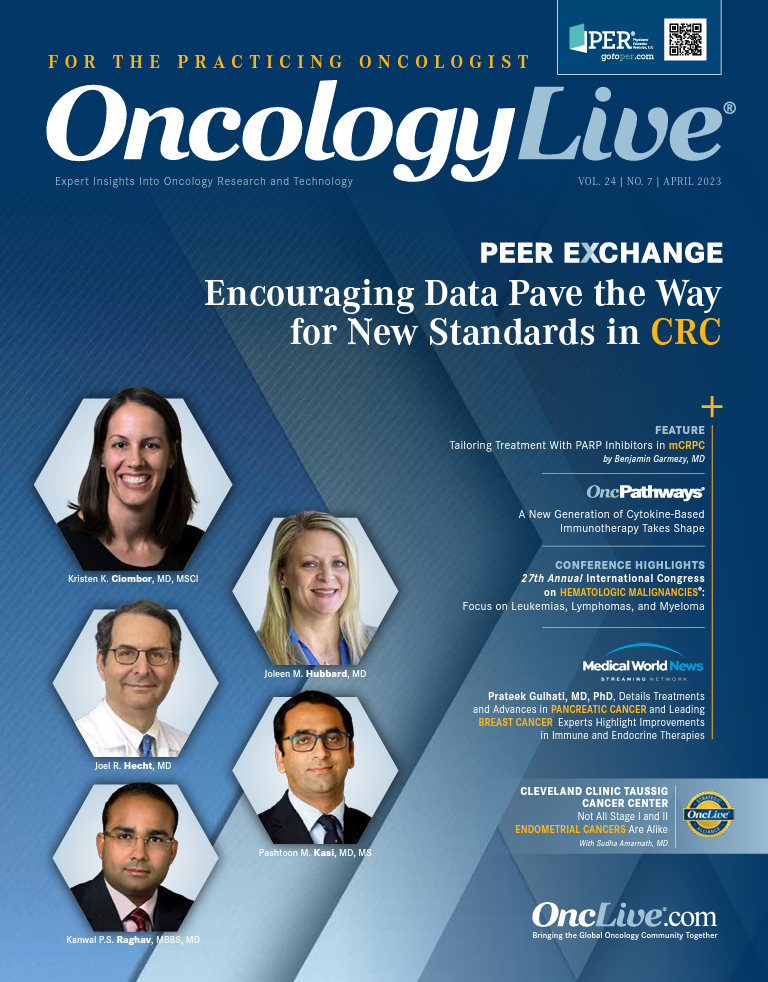Precision Medicine Takes On an Increasingly Relevant but Misunderstood Role in Oncology
The evaluation of diagnostic quality in precision medicine should almost certainly be assessed by standards different from those used in drug development.
Maurie Markman, MD

Regulatory approvals of novel antineoplastic agents based on demonstrated meaningful clinical activity in a specific subset of patients with an anatomically defined cancer (eg, lung cancer) and the documented presence of a unique molecular biomarker (eg, EGFR mutation) have become more frequent events. Although much less common, tumor-agnostic approvals also occur when the FDA has concluded that the presence of the molecular finding alone, independent of the site of origin of the cancer, is sufficient to warrant treatment.1 Further, it is reasonable to anticipate that more approvals based solely on the documented existence of specific molecular biomarkers will be forthcoming.
Although the importance of objectively confirming a patient’s cancer to appropriately manage their care cannot be overstated, it is quite uncertain whether one molecular platform is superior to another in this regard, especially considering the rapid developments in the molecular diagnostic arena. This presents a vexing issue surrounding the role of drug regulatory agencies in defining specific molecular tests or diagnostic platforms for determining the presence of relevant markers for the drug in question. This is not to suggest that diagnostic quality should ever be sacrificed based on a lower-cost or less well-tested product, but rather that the evaluation of quality in this area should almost certainly be assessed by standards different from those used in drug development.
Swift Development
It is rather remarkable just how quickly the virtual revolution in our increasing understanding of the molecular drivers of individual malignancies has transformed cancer care. Consider, for example, that it was only 20 years ago that a report published in the Journal of Clinical Oncology on the activity of the EGFR inhibitor gefitinib (Iressa) in patients with previously treated non–small cell lung cancer (NSCLC), which showed provocative objective activity (in approximately 20%) and observed symptomatic improvement (in approximately 40%), did not even mention the presence or relevance of mutations in EGFR.2 Today, one of the initial questions, if not the single most important question to be asked regarding the administration of this class of agents in patients with NSCLC, is whether such a molecular abnormality exists.
Similarly, it has been little more than a decade since the observation that inhibitors of PARP were clinically effective in the management of epithelial ovarian cancer, specifically in those individuals with documented mutations in germline or somatic BRCA genes or with molecular evidence of homologous recombination deficiency.3-5 Again, evidence of the presence or absence of a relevant molecular target is essential in the decision-making process regarding the potential clinical value of this class of antineoplastic agents in ovarian cancer and other malignancies.
A more recent example of the impressive process of precision cancer medicine is found in the regulatory approval of pemigatinib (Pemazyre) for patients with previously treated or unresectable locally advanced or metastatic cholangiocarcinoma in the documented presence of an FGF2R2 fusion or other rearrangement.6 Cholangiocarcinoma is a rare malignancy comprising only 3% of gastrointestinal cancers worldwide.6 Other than surgical resection, which is a realistic possibility for only one-third of patients at the time of diagnosis, available therapeutic options are of marginal benefit. Patients presenting with advanced disease have a median life expectancy of less than 1 year.
However, clinical investigative efforts observed in FIGHT-202 (NCT02924376), which led to the drug’s accelerated approval, revealed that pemigatinib, a competitive inhibitor of FGFR1, FGFR2, and FGFR3, achieved an objective response rate of 36%, with a median duration of response of 9.1 months, among 107 patients with cholangiocarcinoma who possessed a FGFR2 fusion abnormality.6
It is possible to provide many additional examples of the success of precision cancer medicine—the focused attempt to define unique biological and clinical factors that will increase the likelihood of the administration of a particular antineoplastic agent producing a favorable clinical outcome (eg, increased objective response rate, improved time-to-subsequent disease progression, longer overall survival, etc).
What's Next?
It is essential to highlight that what we are discussing here is the process of drug development and not specific clinical outcomes. We have far to go before the theorized potential of this process to help select highly effective strategies and completely avoid useless or even harmful approaches is achieved in most clinical settings. The recent publication of the long-term survival results of checkpoint inhibitor therapy in the primary treatment of metastatic NSCLC, which failed to reveal any clinical use associated with examining for the presence or absence of PD-L1 expression (< 1% vs ≥ 1%) is testimony to this sobering fact.7
However, it is also critical to acknowledge just how far the cancer laboratory, clinical investigative, and drug regulatory communities have come over the years in carefully and wisely employing the process of precision medicine to improve both the survival of, and quality of life for, patients with malignant disease.
Finally, even the negative results of a rationally developed clinical trial designed to discover if potential targeted therapeutics hypothesized to be inhibitors of a suggested molecular target should not be viewed as a failure of the process of precision cancer medicine.8 Rather, such an outcome represents a clear example of its success, with the findings possibly suggesting that: (a) the specific drugs tested are not clinically meaningful inhibitors of this molecular target; (b) the drugs are not able to be delivered at concentrations required to impact the target; (c) the target is not clinically relevant; or (d) a combination of these data. So, investigators, back to the drawing board.
References
- Kheder ES, Hong DS. Emerging targeted therapy for tumors with NTRK fusion proteins. Clin Cancer Res. 2018;24(23):5807-5814. doi:10.1158/1078-0432.CCR-18-1156
- Fukuoka M, Yano S, Giaccone G, et al. Multi-institutional randomized phase II trial of gefitinib for previously treated patients with advanced non-small-cell lung cancer (the IDEAL 1 trial). J Clin Oncol. 2003;21(12):22372246. doi:10.1200/JCO.2003.10.038
- Ledermann J, Harter P, Gourley C, et al. Olaparib maintenance therapy in platinum-sensitive relapsed ovarian cancer. N Engl J Med. 2012;366(15):1382-1392. doi:10.1056/NEJMoa1105535
- Ledermann J, Harter P, Gourley C, et al. Olaparib maintenance therapy in patients with platinum-sensitive relapsed serous ovarian cancer: a preplanned retrospective analysis of outcomes by BRCA status in a randomized phase 2 trial. Lancet Oncol. 2014;15(8):852-861. doi:10.1016/S1470-2045(14)70228-1
- Tew WP, Lacchetti C, Ellis A, et al. PARP inhibitors in the management of ovarian cancer: ASCO guideline. J Clin Oncol. 2020;38(30):3468-3493. doi:10.1200/JCO.20.01924
- Patel TH, Marcus L, Horiba MN, et al. FDA approval summary: pemigatinib for previously treated, unresectable locally advanced or metastatic cholangiocarcinoma with FGFR2 fusion or other rearrangement. Clin Cancer Res. 2023;29(5):838-842. doi:10.1158/1078-0432.CCR-22-2036
- Brahmer JR, Lee JS, Ciuleanu TE, et al. Five-year survival outcomes with nivolumab plus ipilimumab versus chemotherapy as first-line treatment for metastatic non-small cell lung cancer in Checkmate 227. J Clin Oncol. 2023;41(6):1200-1212. doi:10.1200/JCO.22.01503
- Le Tourneau C, DeLord JP, Gonçalves A, et al; SHIVA investigators. Molecularly targeted therapy based on tumour molecular profiling versus conventional therapy for advanced cancer (SHIVA): a multicentre, open-label, proof-of-concept, randomized controlled phase 2 trial. Lancet Oncol. 2015;16(13):1324-1334. doi:10.1016/ S1470-2045(15)00188-6




